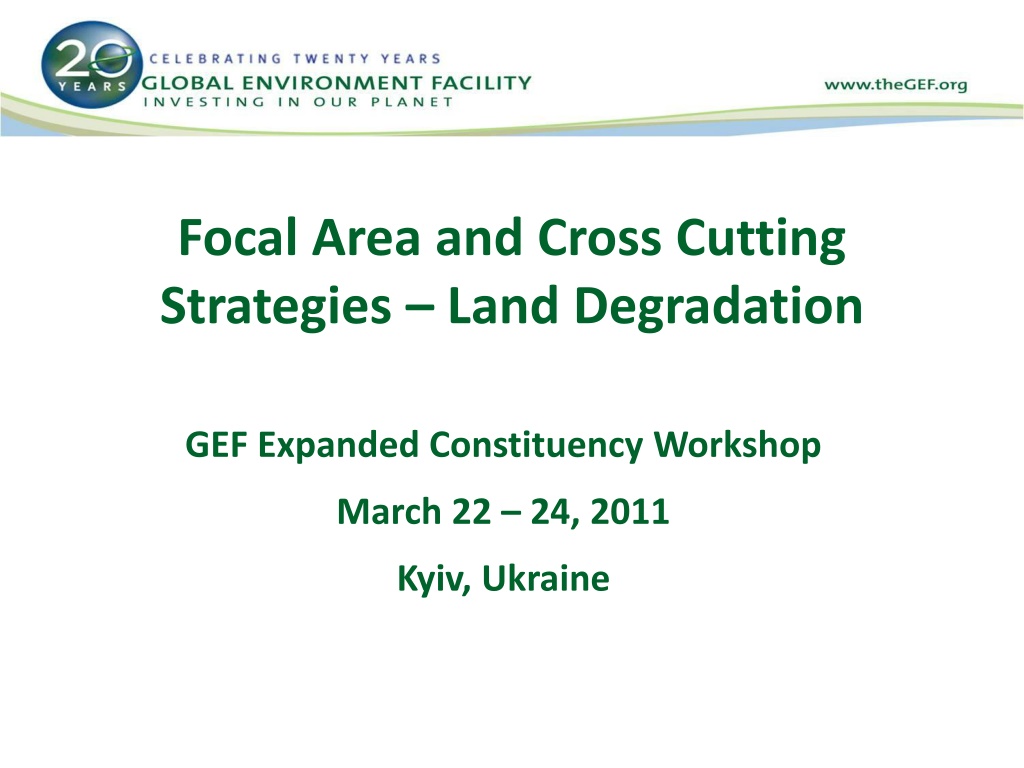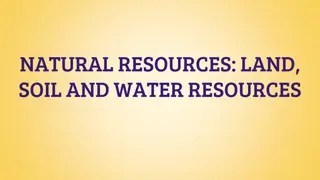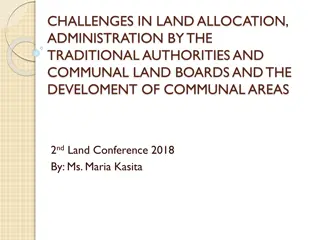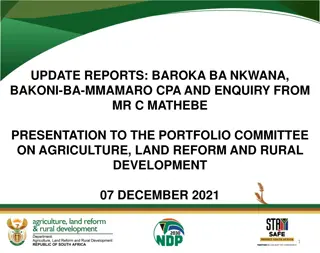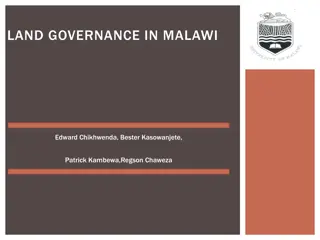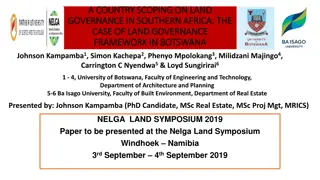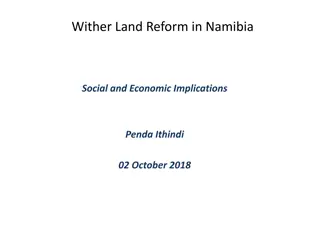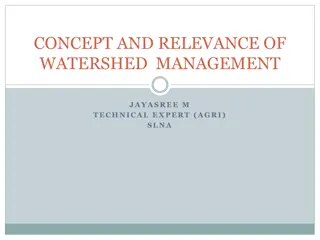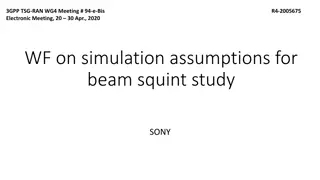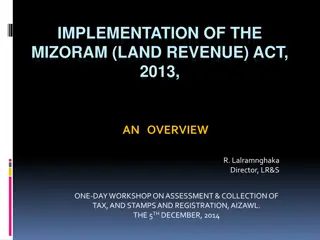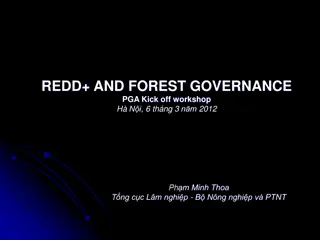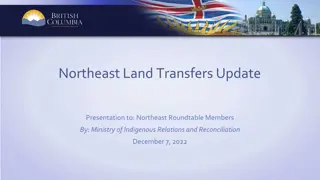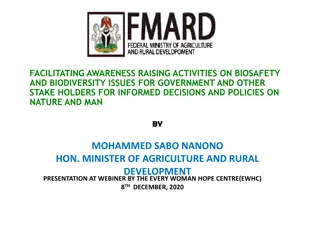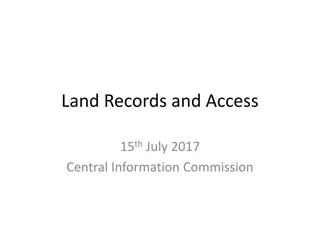Achievements and Strategies in Land Degradation Management
The Global Environment Facility (GEF) has made significant investments in sustainable land management, particularly in drylands, to combat land degradation through projects in over 40 countries. The objectives include maintaining agro-ecosystem services, generating sustainable forest ecosystem services, and reducing pressures on natural resources from competing land uses. Capacity development, innovative financing mechanisms, and improved management practices are key strategies employed to address these challenges.
- Land Degradation
- Sustainable Management
- Global Environment Facility
- Capacity Development
- Sustainable Landscapes
Download Presentation

Please find below an Image/Link to download the presentation.
The content on the website is provided AS IS for your information and personal use only. It may not be sold, licensed, or shared on other websites without obtaining consent from the author. Download presentation by click this link. If you encounter any issues during the download, it is possible that the publisher has removed the file from their server.
E N D
Presentation Transcript
Focal Area and Cross Cutting Strategies Land Degradation GEF Expanded Constituency Workshop March 22 24, 2011 Kyiv, Ukraine
Land Degradation Strategy (Desertification and Deforestation Strategy)
GEF Achievements in Land Degradation $ 340 million invested, $2.4 billion in co-financing to support more than 88 projects The GEF has invested in more than 40 countries to deliver sustainable land management innovations in over 100 million hectares of production landscapes, mainly in drylands to support implementation of the UNCCD The portfolio includes more than $2 billion of regional development financing to benefit 28 countries in Sub-Saharan Africa (agriculture and food security), five countries in the Middle East and North Africa (integrated land and water management), and five countries in Central Asia (dryland management).
Land Degradation Objective 1 Objective 1: MAINTAIN OR IMPROVE FLOWS OF AGRO-ECOSYSTEM SERVICES TO SUSTAIN LIVELIHOODS OF LOCAL COMMUNITIES. Capacity development to improve decision making Improving community-based agricultural management including participatory decision making & gender-related issues. Building of technical and institutional capacities to monitor and reduce GHG emissions from agricultural activities. Improving management of impacts of climate change Securing innovative financing mechanism based on valuation of environmental services (e.g. PES and other market-based mechanisms) Improving rangeland management and sustainable pastoralism
Land Degradation Objective 2 Objective 2: GENERATE SUSTAINABLE FLOWS OF FOREST ECOSYSTEM SERVICES IN ARID, SEMI-ARID AND SUB- HUMID ZONES, INCLUDING SUSTAINING LIVELIHOODS OF FOREST-DEPENDENT PEOPLE Capacity development: Forest policy and related legal and regulatory frameworks Sustainable management of forests and trees outside forests for timber and non-timber products. Reforestation and use of local species, including agro-forestry Management of impacts of climate change on forest lands, practices and choice of species used for reforestation. Mechanisms to scale up and out good practices through e.g. private sector, community-based organizations, extension services, and media.
Land Degradation Objective 3 Objective 3: REDUCE PRESSURES ON NATURAL RESOURCES FROM COMPETING LAND USES IN THE WIDER LANDSCAPE Capacity development to improve decision-making in management of production landscapes Developing innovative financing mechanisms such as Paying for ecosystems Services Improving management of agricultural activities within the vicinity of protected areas Integrated watershed management, including transboundary areas where SLM interventions can improve hydrological functions and services for agro- ecosystem productivity (crop and livestock).
Land Degradation Objective 4 Objective 4 INCREASE CAPACITY TO APPLY ADAPTIVE MANAGEMENT TOOLS IN SLM Results-monitoring of UNCCD action programs Mainstreaming synergies and best practices for Natural Resource Management Development of guidelines and tools for assessing ecosystem stability, resilience and maintenance of regulating services
Global Environmental Benefits Improved provision of agro-ecosystem and forest ecosystem goods and services. Reduced GHG emissions from agriculture, deforestation and forest degradation and increased carbon sequestration. Reduced vulnerability of agro-ecosystem and forest ecosystems to climate change and other human-induced impacts.
National Socio-economic Benefits Sustained livelihoods for people dependent on the use and management of natural resources (land, water, and biodiversity). Reduced vulnerability to impacts of CC of people dependent on the use and management of natural resources in agricultural and forest ecosystems. Millennium Development Goals
